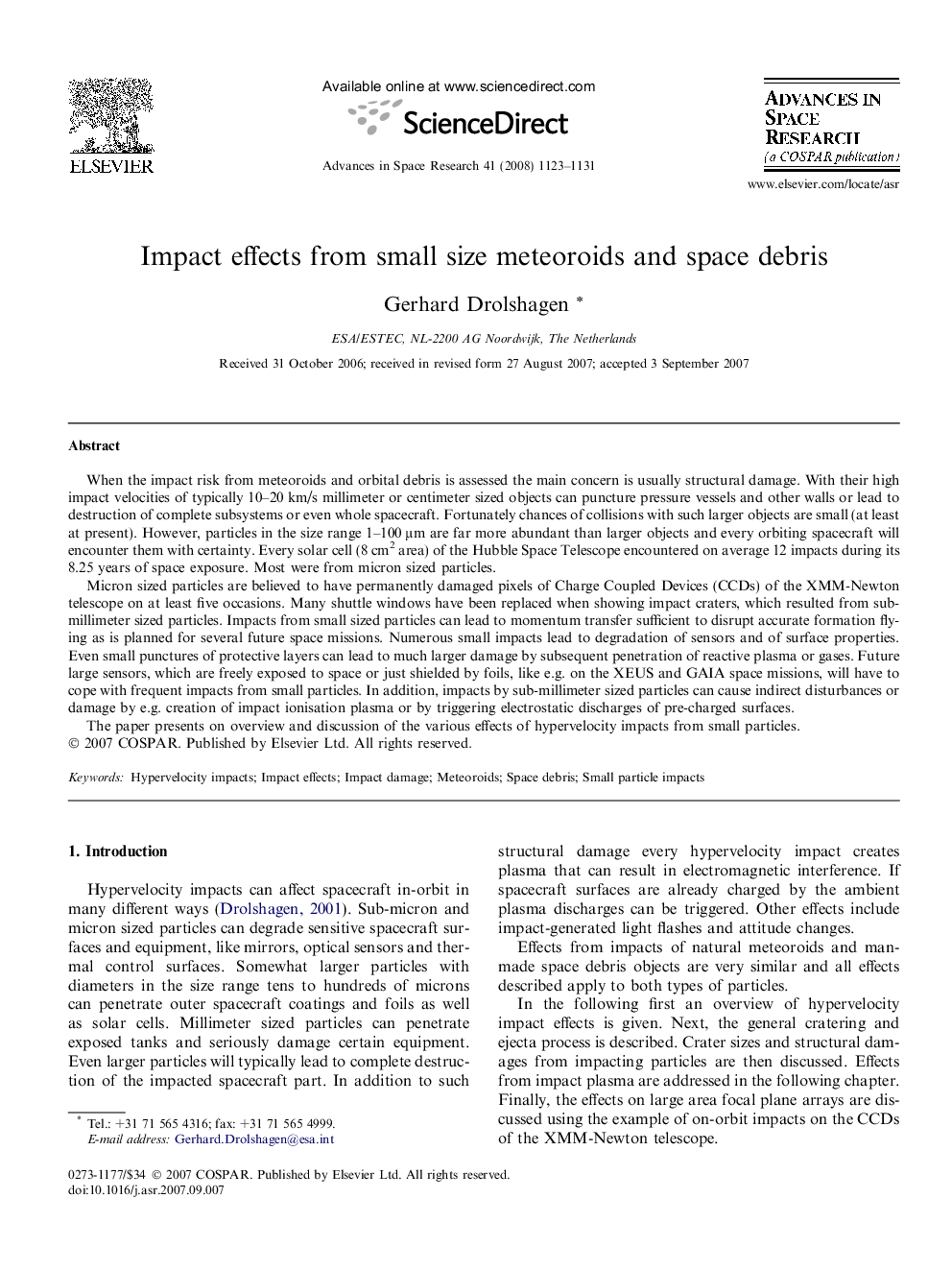| Article ID | Journal | Published Year | Pages | File Type |
|---|---|---|---|---|
| 1768413 | Advances in Space Research | 2008 | 9 Pages |
When the impact risk from meteoroids and orbital debris is assessed the main concern is usually structural damage. With their high impact velocities of typically 10–20 km/s millimeter or centimeter sized objects can puncture pressure vessels and other walls or lead to destruction of complete subsystems or even whole spacecraft. Fortunately chances of collisions with such larger objects are small (at least at present). However, particles in the size range 1–100 μm are far more abundant than larger objects and every orbiting spacecraft will encounter them with certainty. Every solar cell (8 cm2 area) of the Hubble Space Telescope encountered on average 12 impacts during its 8.25 years of space exposure. Most were from micron sized particles.Micron sized particles are believed to have permanently damaged pixels of Charge Coupled Devices (CCDs) of the XMM-Newton telescope on at least five occasions. Many shuttle windows have been replaced when showing impact craters, which resulted from sub-millimeter sized particles. Impacts from small sized particles can lead to momentum transfer sufficient to disrupt accurate formation flying as is planned for several future space missions. Numerous small impacts lead to degradation of sensors and of surface properties. Even small punctures of protective layers can lead to much larger damage by subsequent penetration of reactive plasma or gases. Future large sensors, which are freely exposed to space or just shielded by foils, like e.g. on the XEUS and GAIA space missions, will have to cope with frequent impacts from small particles. In addition, impacts by sub-millimeter sized particles can cause indirect disturbances or damage by e.g. creation of impact ionisation plasma or by triggering electrostatic discharges of pre-charged surfaces.The paper presents on overview and discussion of the various effects of hypervelocity impacts from small particles.
